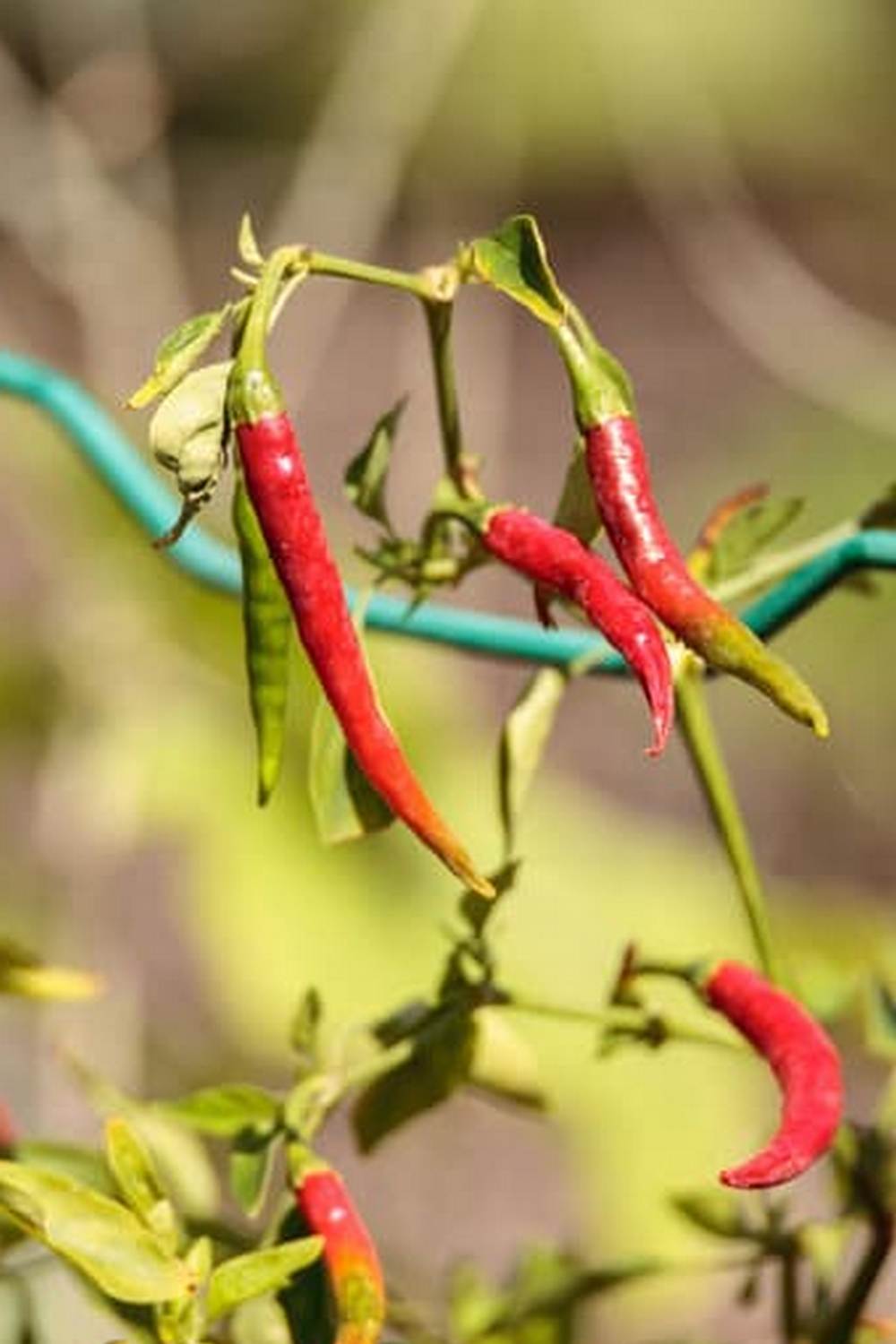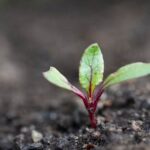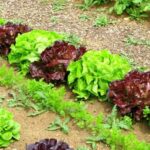Container vegetable gardening in West Texas offers a unique opportunity for individuals to grow their own fresh produce, even in the challenging climate of this region. This method of gardening involves growing vegetables in containers instead of traditional garden beds, providing greater control over soil and water conditions. In West Texas, where the hot and dry climate can present obstacles to successful gardening, container vegetable gardening becomes an attractive option for those looking to cultivate their own crops.
One of the key benefits of container vegetable gardening is the ability to control the soil quality and water levels specific to each plant’s needs. This is especially crucial in a region like West Texas, where maintaining adequate moisture levels can be a challenge. Additionally, containers offer the flexibility to move plants to different locations based on sunlight availability, making it easier to ensure optimal growing conditions for each vegetable variety.
For residents of West Texas with limited outdoor space or restrictive soil conditions, container gardening provides a practical solution. By choosing the right containers that are suitable for the local climate, ensuring proper drainage and size considerations, gardeners can create thriving mini-gardens even in small spaces. Creative container options also allow for unique garden displays that can enhance any outdoor area while yielding a bountiful harvest of fresh vegetables.
Benefits of Container Vegetable Gardening
Container vegetable gardening offers a range of benefits for individuals looking to grow their own fresh produce, especially in the challenging climate of West Texas. One of the key advantages of container gardening is the ability to control soil and water conditions.
In a region known for its sandy and alkaline soil, using containers allows gardeners to tailor the soil mix to suit the specific needs of different vegetables. Additionally, containers with adequate drainage can help prevent waterlogged roots, a common issue in arid climates like West Texas.
Another benefit of container vegetable gardening is the flexibility it provides in terms of sunlight exposure. In West Texas, where extreme heat and intense sunlight can be detrimental to plants, containers can be easily moved to more shaded areas or positioned strategically to receive optimal sunlight. This adaptability ensures that vegetables have the best chance at thriving despite the unpredictable weather conditions in the region.
Moreover, container gardening is an ideal solution for those with limited outdoor space or no access to traditional garden plots. Whether you live in an apartment, condominium, or have a small backyard, containers can be placed on patios, balconies, or even windowsills to create a vibrant vegetable garden. This accessibility makes it possible for anyone interested in growing their own food to participate in container vegetable gardening in West Texas.
Choosing the Right Containers
Container gardening in West Texas presents a unique set of challenges due to the region’s hot and dry climate. When choosing containers for your vegetable garden in West Texas, it is crucial to select options that can withstand the harsh weather conditions.
Materials like clay, terracotta, or wood may not be suitable as they can easily dry out or crack in the intense heat. Instead, opt for durable materials like plastic or resin that can better retain moisture and withstand the temperature fluctuations.
Proper drainage is essential for successful container vegetable gardening in West Texas. Without adequate drainage, excess water can accumulate at the bottom of the container, leading to root rot and other issues. Make sure your containers have drainage holes at the bottom to allow water to escape freely. Additionally, consider the size of the containers when selecting them for your garden. Larger containers can hold more soil volume, which helps insulate plants’ roots from extreme temperatures.
In addition to conventional containers, there are plenty of creative options available for unique garden displays in West Texas. Consider repurposing items like buckets, crates, or even old tires as alternative containers for your vegetable garden.
Just make sure these items are thoroughly cleaned and have proper drainage before using them for planting. Thinking outside the box when choosing containers can add a fun and personalized touch to your container vegetable garden while still providing a practical growing environment for your plants.
| Container Materials | Drainage Needs |
|---|---|
| Plastic or resin | Containers should have drainage holes |
| Metal | Avoid rusting by ensuring proper drainage |
| Repurposed items | Thoroughly clean and drill holes for drainage if needed |
Selecting Vegetables for West Texas
Container vegetable gardening in West Texas comes with its unique set of challenges, mainly due to the hot and dry climate of the region. When choosing vegetables to grow in containers in West Texas, it is essential to select ones that are well-suited to withstand these conditions. Some vegetables that thrive in this environment include tomatoes, peppers, zucchini, and herbs like rosemary and thyme. These plants can handle the intense heat and require minimal water compared to other varieties.
To have a successful container vegetable garden in West Texas, it is crucial to pick vegetables that are not only suitable for the climate but also for container gardening. Vegetables like cherry tomatoes, chili peppers, and leafy greens such as lettuce and spinach are excellent choices for growing in containers. Their compact size makes them ideal for limited spaces, and they adapt well to the controlled environment containers provide.
When selecting vegetables for your container garden in West Texas, consider the size of your containers and how many plants can comfortably fit in each one. To make the most of your space, opt for bush or dwarf varieties of vegetables that do not require large amounts of soil or room to spread out.
Additionally, choose vegetables that have similar growing requirements to ensure they all thrive together in the same containers. By carefully selecting the right vegetables for your container garden in West Texas, you can enjoy a bountiful harvest despite the challenging climate conditions.
- Tomatoes
- Peppers
- Zucchini
- Herbs like rosemary and thyme
Soil and Fertilizer Tips
Container gardening in West Texas comes with its own unique set of challenges, especially when it comes to soil and fertilizer. The hot and dry climate of West Texas requires careful attention to the quality of the soil used in containers for vegetable gardening.
To ensure successful plant growth, it is essential to choose a high-quality potting mix that provides the necessary nutrients and drainage for plants to thrive. Here are some tips for soil and fertilizer management in container vegetable gardening in this region:
- Choose a well-draining potting mix specifically formulated for vegetables. Avoid heavy clay soils that can restrict root growth.
- Consider adding organic matter such as compost or aged manure to improve soil structure and nutrient content.
- Regularly monitor the soil moisture levels in containers to prevent waterlogged conditions that can lead to root rot.
In addition to selecting the right soil mix, proper fertilization is crucial for container vegetable gardening in West Texas. Container plants have limited access to nutrients compared to plants grown in the ground, so using a balanced fertilizer is essential for healthy plant growth. Organic options such as compost tea or fish emulsion can be effective choices for providing essential nutrients without the risk of chemical buildup. Here are some tips for fertilizing container vegetables:
- Use a slow-release fertilizer or liquid fertilizer diluted to half strength to avoid over-fertilizing sensitive container plants.
- Monitor plant growth and adjust fertilization schedules accordingly based on the specific needs of each vegetable variety.
- Avoid excessive use of chemical fertilizers, as they can build up salts in the soil over time and harm plant roots.
By paying close attention to soil quality and proper fertilization techniques, container gardeners in West Texas can enjoy bountiful harvests of fresh vegetables throughout the growing season. Remember that healthy soil leads to healthy plants, so investing time and effort into maintaining good soil fertility will pay off in abundant yields of homegrown produce.
Watering Techniques
Container vegetable gardening in West Texas requires special attention when it comes to watering techniques. The hot and dry climate in the region can pose challenges for maintaining optimal moisture levels for plants grown in containers. Understanding the water needs of different vegetables, as well as implementing effective strategies for irrigation, is essential for successful container gardening.
One key consideration for watering container vegetables in West Texas is the importance of consistent moisture without overwatering. Since containers have limited soil volume, they can dry out quickly, especially during periods of intense heat. It is crucial to check the moisture level of the soil regularly and adjust watering frequency accordingly. Overwatering can lead to root rot and other issues, so it’s important to find a balance that keeps the soil moist but not waterlogged.
To prevent both overwatering and underwatering, it is recommended to establish a regular watering schedule based on the specific needs of the plants and the environmental conditions in West Texas. Consider factors such as temperature, humidity, and sunlight exposure when determining how often and how much to water your container vegetables.
Using a moisture meter or simply feeling the soil with your fingers can help gauge when it’s time to water. Additionally, incorporating mulch on top of the soil can help retain moisture and reduce evaporation, especially during hot summer months.
| Watering Techniques | Container Vegetable Gardening in West Texas |
|---|---|
| Consistent moisture levels | Challenges with limited soil volume |
| Regular watering schedule | Avoiding overwatering and underwatering |
| Mulching for moisture retention | Adapting to hot and dry climate conditions |
Sunlight and Shade Management
In West Texas, managing sunlight and shade for your container vegetable garden is crucial due to the intense heat and high temperatures experienced in the region. Understanding the sun exposure needs of different vegetable plants is essential for their growth and productivity. Some vegetables, such as tomatoes and peppers, thrive in full sun conditions, while others like lettuce and spinach prefer some shade during the hottest parts of the day.
Positioning your containers for optimal sunlight in West Texas can make a significant difference in the health and yield of your vegetables. Place sun-loving plants where they can receive at least 6-8 hours of direct sunlight each day, preferably in the morning when the sun is less harsh.
If you have limited sunny spots or need to protect certain plants from scorching afternoon sun, consider using shading techniques like umbrellas, shade cloth, or placing taller plants nearby to provide natural shade.
When setting up your container garden in West Texas, be mindful of how the sun moves throughout the day and adjust the positioning of your containers accordingly. By managing sunlight and shade effectively, you can create a favorable environment for your vegetables to thrive despite the challenging climate of West Texas. With careful planning and attention to sun exposure, you can enjoy a bountiful harvest from your container vegetable garden year-round.
Maintenance and Care
Maintaining and caring for your container vegetable garden in West Texas is crucial to ensure a bountiful harvest. By following proper practices, you can prevent pests and diseases, promote healthy plant growth, and extend the longevity of your plants. Here are some essential tips for maintaining and caring for your container garden:
Pests and Disease Management
In West Texas, common pests such as aphids, spider mites, and whiteflies can pose a threat to your vegetable plants. It is important to regularly inspect your plants for any signs of infestation and take action promptly. Consider using natural pest control methods or organic pesticides to protect your plants while minimizing harm to beneficial insects.
Pruning and Harvesting Techniques
Regular pruning of your vegetable plants can help promote better airflow, prevent overcrowding, and encourage fruit production. Be sure to remove any dead or diseased foliage to maintain the overall health of your plants. When it comes time to harvest your vegetables, follow specific guidelines for each type of crop to ensure optimal flavor and quality.
Winterizing Containers
As colder months approach in West Texas, it is important to prepare your container garden for winter conditions. Insulate containers with materials like bubble wrap or burlap to protect roots from freezing temperatures. Consider moving tender plants indoors or into a greenhouse during extreme cold spells. Additionally, reduce watering frequency in winter months but continue to monitor soil moisture levels to prevent dehydration.
By implementing these maintenance and care practices in your container vegetable gardening in West Texas, you can enjoy a successful and thriving garden throughout the year. Remember that regular monitoring, timely interventions, and proper care are key factors in achieving a sustainable container garden filled with fresh produce for you to enjoy.
Conclusion
Container vegetable gardening in West Texas offers a unique and rewarding way to grow fresh produce even in the challenging climate of the region. By using containers, gardeners have the ability to control soil and water conditions, making it easier to cultivate a thriving garden. The flexibility to move containers to optimal sunlight locations is also beneficial, especially in areas with limited outdoor space or varying sunlight exposure throughout the day.
When choosing containers for vegetable gardening in West Texas, it is important to select options that are suitable for the climate, provide proper drainage, and are appropriately sized for the plants being grown. Creative container options can add a decorative element to the garden while also showcasing unique plant displays. Selecting vegetables that thrive in the hot and dry climate of West Texas is key to successful container gardening, along with using quality soil and implementing proper fertilization techniques.
In conclusion, container vegetable gardening in West Texas requires careful consideration of the specific challenges posed by this region’s climate. By following the tips and guidelines outlined in this article, gardeners can create a successful container garden that yields fresh and delicious produce. Start your own container vegetable garden today and enjoy the satisfaction of growing your own food right at home. Happy gardening.
Frequently Asked Questions
What Vegetables Grow Best in West Texas?
In West Texas, vegetables that grow best are those that can withstand hot temperatures and low rainfall. Some examples include tomatoes, peppers, squash, okra, and cucumbers. These vegetables thrive in the arid climate and sandy soil common in this region.
What Vegetables Do Best in Containers?
Vegetables that do best in containers are those with shallow roots or compact growth habits. Herbs like basil, parsley, and chives are great options for containers due to their small size. Cherry tomatoes, peppers, lettuce, and radishes also do well in pots or raised beds.
What Is the Easiest Vegetable to Grow in Texas?
The easiest vegetable to grow in Texas is probably the tomato plant. Tomatoes are resilient plants that can adapt to various growing conditions. They require sunlight, well-draining soil, and regular watering to thrive. With some basic care and attention, you can enjoy a bountiful harvest of delicious tomatoes throughout the growing season.

If you’re looking to get into vegetable gardening, or are just looking for some tips on how to make your current garden better, then you’ve come to the right place! My name is Ethel and I have been gardening for years. In this blog, I’m going to share with you some of my best tips on how to create a successful vegetable garden.





